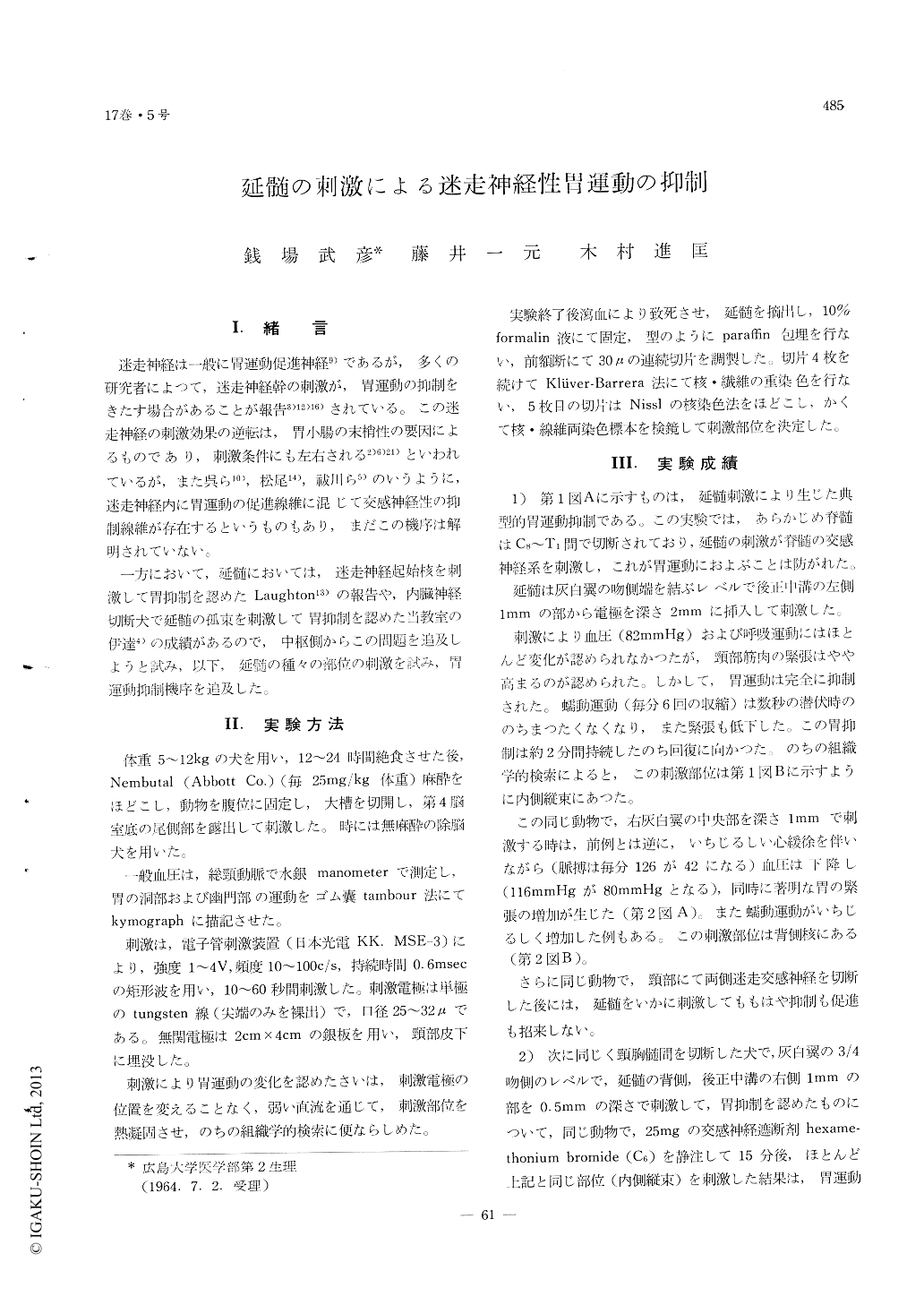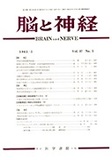Japanese
English
- 有料閲覧
- Abstract 文献概要
- 1ページ目 Look Inside
I.緒言
迷走神経は一般に胃運動促進神経9)であるが,多くの研究者によつて,迷走神経幹の刺激が,胃運動の抑制をきたす場合があることが報告3)12)16)されている。この迷走神経の刺激効果の逆転は,胃小腸の末梢性の要因によるものであり,刺激条件にも左右される2)6)21)といわれているが,また呉ら10),松尾14),祓川ら5)のいうように,迷走神経内に胃運動の促進線維に混じて交感神経性の抑制線維が存在するというものもあり,まだこの機序は解明されていない。
一方において,延髄においては,迷走神経起始核を刺激して胃抑制を認めたLaughton13)の報告や,内臓神経切断犬で延髄の孤束を刺激して胃抑制を認めた当教室の伊達4)の成績があるので,中枢側からこの問題を追及しようと試み,以下,延髄の種々の部位の刺激を試み,胃運動抑制機序を追及した。
Although it is considered that the vagus nerve containsn only the motor fiber to the stomach, it has been reported by meny investigators that the stimu-lation of the vagal nerve trunk produced the inhibi-tory response to the stomach. And it is considered that the reversed effects of the vagus nerve are de-pendent on the peripheral mechanism of the stomach, and on the conditions of the stimulation. However, the mechanism of the reversed effects has not yet been determined.
The present author studied on the inhibitory res-ponse of the stomach through the vagus nerve, which was produced by the stimulation of the dog's medulla oblongata.
Dogs were used in all experiments, and anestheti-zed with Nembutal. Spinal cord was previously transected between the cervical and thoracic region, in order to avoid the effects of the spinal sympathetic nerves. The movements of the stomach were record-ed on the kymograph by the balloon tambour sys-tem. The electronic stimulator was employed with an intensity of 1-4V, frequency 10-100c/s, dura-tion 0.6 msec. and period 10-60 secs.
The typical vagal inhibitory effects were obtained by the stimulation. The peristaltic movements were abolished and the tone of stomach decreased. On the same animals, the stimulation of alae cinerea pro-duced always the motor response of the stomach. The inhibitory effects were abolished after the bila-teral vagotomy and after the application of hexame-thonium bromide.
The inhibitory areas were examined histologically. The stimulated areas of 25 examples among 38 ex-periments were located in the medial longitudinal fascicles. 6 examples were located in the reticular formation.
The present authors demonstrated already that the vagus nerve had a role as the efferent nerve path-ways on the gastric inhibitory reflexes. This fact shows that the vagal inhibitory responses are the physiological responses to the stomach.
It may be concluded from this experiment that the adrenergic nerve fibers which inhibit the stomach movements are contained in the vagus nerve.

Copyright © 1965, Igaku-Shoin Ltd. All rights reserved.


